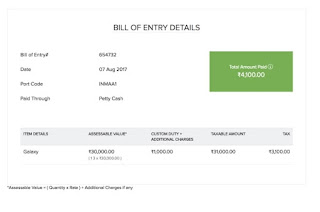Navigating the World of GST: Login, Bulk Verification, Software, Returns, and Calculator
Goods and Services Tax (GST) is a game-changing tax reform that was introduced in India to simplify the indirect tax system. It replaced a complex web of indirect taxes with a single, unified tax regime. One of the key aspects of GST is its digital nature, which means that businesses need to interact with the GST portal for various tasks such as GST login, bulk verification, return filing, and more. In this blog, we will explore these essential aspects of GST and how they impact businesses.
1. GST Login
The first step for any business to start its GST journey is to register on the GST portal and obtain a GSTIN (GST Identification Number). Once registered, businesses can access their GST accounts through the GST login portal. Here are a few key points to consider regarding GST login:
Secure Access: GST login credentials are crucial for businesses. It's essential to keep them secure to prevent unauthorized access or misuse of your GST account.
Multiple User Access: Businesses can authorize multiple users to access their GST accounts. This feature is useful for larger organizations with various departments handling different aspects of GST compliance.
Two-factor Authentication: GST portal often employs two-factor authentication (2FA) to enhance security. This means that after entering your username and password, you may receive an OTP (One-Time Password) on your registered mobile number or email for verification.
2. GST Bulk Verification
GST Bulk Verification is a feature that allows businesses to validate the GSTINs of their vendors or customers in bulk. It is an essential tool for businesses to ensure that they are dealing with legitimate and GST-compliant entities. Here are some key points regarding GST Bulk Verification:
Time-Saving: Instead of verifying GSTINs one by one, businesses can upload a list of GSTINs for bulk verification, saving time and effort.
Error Reduction: Bulk verification helps in reducing errors in GST returns and transactions by ensuring that the GSTINs entered are correct and valid.
Vendor Due Diligence: It aids in vendor due diligence, which is crucial for businesses to avoid complications and penalties in GST compliance.
3. GST Software
GST compliance involves a lot of documentation, calculations, and reporting. To simplify this process, various GST software solutions are available in the market. Here's why GST software is beneficial:
Automation: GST software automates tasks such as invoice generation, return filing, and reconciliation, reducing the chances of errors and saving time.
Real-time Updates: Most GST software solutions provide real-time updates on changes in GST rules and regulations, ensuring businesses stay compliant.
Data Security: Data security is a top priority. Good GST software will have robust security measures to protect sensitive financial information.
4. GST Return
GST return filing is a recurring activity for businesses registered under GST. It involves reporting their sales and purchases to the government. Here are some key points about GST return filing:
Types of Returns: There are various types of GST returns, such as GSTR-1 (for sales), GSTR-3B (summary return), and GSTR-9 (annual return). The type of return to be filed depends on the nature of the business.
Due Dates: GST return due dates vary depending on the type of return and the turnover of the business. Missing these deadlines can lead to penalties and interest.
Input Tax Credit: Accurate return filing ensures that businesses can claim input tax credit, reducing their tax liability.
5. GST Calculator
A GST calculator is a handy tool for businesses to calculate the GST liability on their transactions. Here's why it's useful:
Easy Calculations: A GST calculator simplifies complex tax calculations, ensuring accuracy in GST invoices and returns.
Quick Estimates: It helps businesses estimate their GST liability before filing returns, aiding in financial planning.
Avoiding Errors: Manual calculations can lead to errors. A GST calculator minimizes the risk of such errors, reducing the chances of tax disputes.
Conclusion
Navigating the world of GST can be complex, but with the right tools and knowledge, businesses can streamline their GST compliance processes. From GST login to bulk verification, using GST software, filing returns, and using a GST calculator, these aspects play a crucial role in ensuring that businesses remain GST-compliant and enjoy the benefits of this unified tax system. Staying informed and leveraging technology can make the GST journey smoother and more efficient for businesses of all sizes.
Masters India Facebook | Masters India Twitter | Masters India LinkedIn | Masters India Zotero | Masters India Visually

Comments
Post a Comment